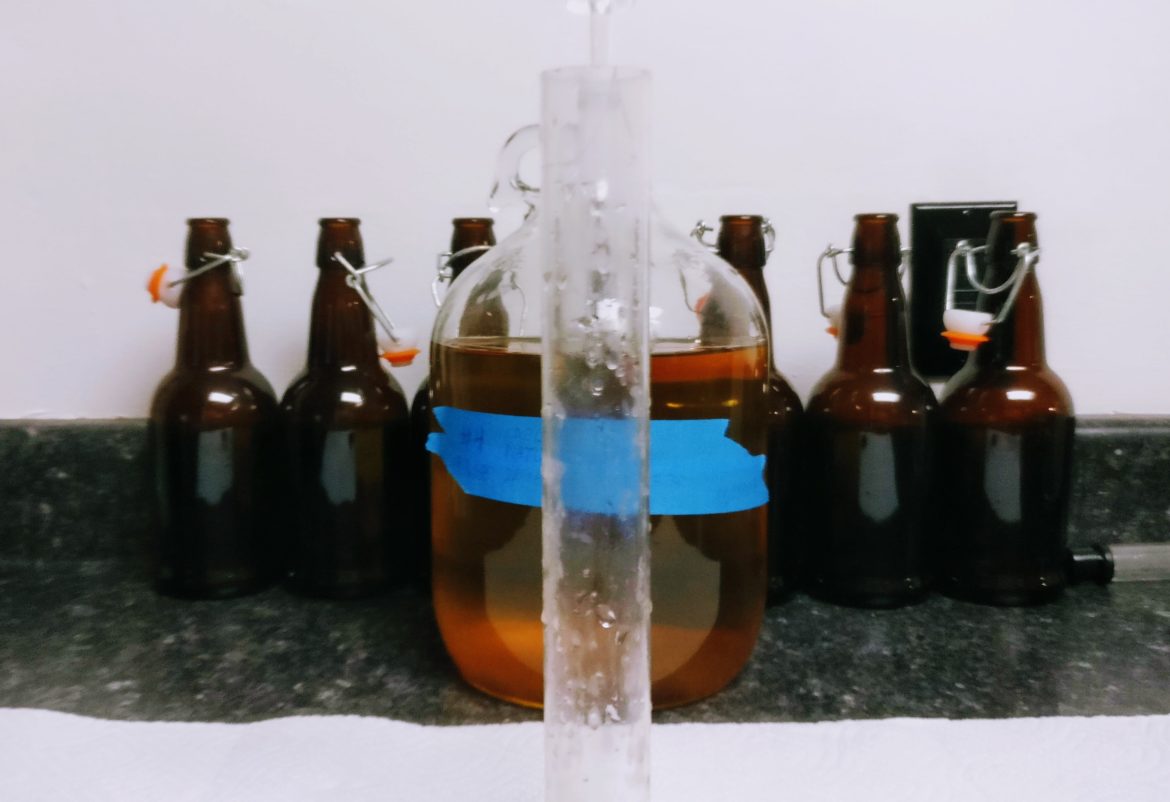Mead #4 – Naturally we should start comparing.
Mead #4 made from Crockett Natural Wild Desert Mesquite is on the bottling block today and we will be using swing top bottles with an auto-siphon again. This is our preferred bottling method if we aren’t dealing with kegs. Hopefully we will get to kegging at some point, but for that we’ll want to up to quantity we’re making to around 5 gallons. Then we can look into the effects of different gases as well.
For now we will continue with the same process we have with the other meads and get started with bottling. We’ve covered most of the popular methods of bottling and capping with the exception cork bottling which we’ve never done. Most of our experience comes from the world of homebrewing beer so we’ve stuck to what we know.
For beer brewing we usuallyuse a mix of both swing top and capped bottles, 6 or less swing tops and caps for the rest. This is due partly because we make our beers in 5 gallon batches. This makes the overall cost of bottles much higher for swing tops as you’re bottling around 50 bottles a batch. We’ll bottle a few swing tops and put them away in an extra closet to compare with future batches for consistency or just to pop open one that we remember being particularly tasty. We are doing the same with some of the bottles of mead.

Getting back to the subject at hand Mead #4. Like with Mead #2 and #3 we will need to take a final gravity reading. We normally fill a few bottles then fill our graduated cylinder so we are collecting a reading from the mead bottled in the middle. Does this method have a bases in science? Not as far as we know, but hey it makes us feel like it’s more accurate and that’s what counts. So it sounds like in the big back log of things to eventually test we should see if the the point when you measure the gravity differs from beginning to end.
Back to the gravity of Mead #4, we had an initial gravity of 1.068 and we now have a final gravity of 0.992. A little more alcohol in this batch finishing at 10.21%. This is a respectable amount alcohol for a mead.
How does Mead #4 compare to Mead #2 & #3?
Purely on alcohol produced #4’s honey Crockett Natural Wild Desert Mesquite produced 1.634% ABV more than Mead #3 and 1.846% ABV more than Mead #2. A 1.634% ABV difference may not sound like a lot but when you consider that is 18% more alcohol than Mead #2 that is a substantial difference.
What caused this difference in production? I have no idea. The proper solution is to run all the honeys through another round of testing to see if the results hold true.
Oh no… I’ll have twice as much mead… Next time they will all be started, stored, and finished at the same time and locations.
Though the numbers don’t seem like they add up, on taste and smell #4 is winning for me. After two blind taste tests #3 was more popular over all on taste, and #2 on smell. All three have a slight ethanol smell on initial opening. As far as taste #2 and #3 taste sweet and #4 is bolder with a fruitier flavor.
As more meads are tested we check back against these earliest to compare.
| Original Gravity | 1.062 |
| Second Gravity | 1.015 |
| Third Gravity | 0.992 |
| ABV 1* | 10.218 |
| ABV 2* | 9.975 |
| Calories from Alcohol (12oz) | 200.607 |
| Calories from Mead (12oz) | 18.808 |
| Total Calories (12oz) | 219.415 |
| Start Date | 09/13/2018 |
| Primary Temp in Fahrenheit | 72 |
| Primary Length in days | 14 |
ABV 1 formula: (76.08 * (og-fg) / (1.775-og)) * (fg / 0.794)
ABV 2 formula: (og – fg) * 131.25
Calories from Alcohol formula: 1881.22 * FG * (OG-FG)/(1.775-OG)
Calories from Mead Formula: 3550.0 * FG * ((0.1808 * OG) + (0.8192 * FG) – 1.0004)
Calories Total Formula: Calories from Alcohol + Calories from Mead
